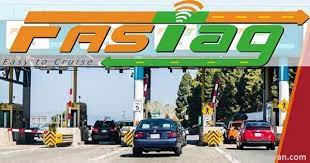The Pros and Cons of Fastag

Introduction
FASTag is a radio frequency identification (RFID) powered sticker that is applied to vehicle windscreens. When the vehicle is in motion, Radio Frequency Identification (RFID) technology is used to make toll payments directly from an account connected to the FASTag. National Payments Corporation of India (NPCI), National Highways Authority of India (NHAI), and Indian Highways Management Company Limited launched the National Electronic Toll Collection (NETC) program (IHMCL).
FASTag allows customers to transact using a cashless payment system while also providing benefits such as fuel and time savings by eliminating the need for the customer to wait at the toll plaza. The system is currently operational at over 600 toll plazas across the country.
FASTag is now required for all four-wheelers sold before December 1, 2017, according to the Union Ministry of Road Transport and Highways. When driving, you must have an active car insurance policy, according to the most recent Motor Vehicles Act. Only if the car has a current FASTag can new third-party car insurance be issued, starting April 1, 2021.
The pros of FASTag
- Convenience
One advantage of usingFASTag is that you won’t have to wait in line for too long. Time is of the essence, and both ends are saving time. Customers will be at ease and will be able to do business on the highway without experiencing any delays or overhead. This device would also reduce traffic congestion and delays, which are the biggest source of annoyance for all.
- Minimize corruption
This RFID-based system would deter dishonest workers and corporations from abusing toll plazas and tampering with toll booth systems because there will be no cash on hand and all toll money will be sent to the government authority or agency in charge of that Toll Plaza. As a result, there will be no malicious people interfering, and the chance of fraud will be eliminated.
- Secure payment system
The fact that payment is wired to the official in charge guarantees that fair practices is followed when it comes to tax payment and collection. Both the payer and the payee company profit from this scheme. People must pay the exact sum, not more than the taxable amount at the plaza. The system includes a protected billing mechanism in which the payer receives notifications to his registered phone number and connected bank account.
- Protection
The digital framework can’t be beaten and is less likely to fail. When a customer passes through a toll plaza on the highway, the ETC (Electronic Toll Collection) system saves all vehicle information on the server. A vehicle can be easily traced in the event of a crime or an accident, and more information can be retrieved faster.
- Savings
Save your own money and resources also saves money and resources for the government. There would be the least amount of fuel consumption if there are no long waiting lines. Customers will be able to save more fuel while maintaining their mileage. Less fuel consumption would also save money for the government. According to news, customers can receive cashback in the form of a discount of up to 2.5 percent for any purchase made through FASTag.
- Lower manpower cost
Since it will be automated, businesses will be able to save money by reducing the expense of manpower working in various plaza lanes. The authority would not be involved in cash handling or administration, which could minimise the number of human errors and work hours. This technology would result in a system that is both easy and reliable.
The cons of FASTag
- System or network failure
Since all of the processes will be regulated by an automated network, the network will be responsible for a greater portion of the process and the theFASTagtechnology. It becomes critical to keep the network servers up and running, as their failure may cause havoc and disrupt the smooth flow of work. This, in turn, could have an effect on consumers and result in a major financial loss for the government.
- Glitches
Since no computer is resistant to failure, it is necessary to bear in mind that the scanning mechanisms can be unable to read a FASTag. In this situation, troubleshooting certain issues requires technological expertise. After a few transactions, the FASTag may become unreadable in the rarest of cases. The government or issuer must have a scheme in place to reissue the same to the consumer in the event of a failure. - Card safety
The FASTag is a small sticker that goes on the inside of your windshield. If this FASTag is tampered with or damaged in some way, it will cause additional problems for the consumer. It can become unusable, necessitating the purchase of a new FASTag for your car. You’ll have to go through the registration process again, even if the money is refundable. - Ownership It’s uncertain if anyone else will operate the vehicle because the vehicle owner’s registration details are encrypted in the FASTag. Given that the owner’s identification and bank records will be connected to the FASTag, it’s unclear if other people will be able to drive your vehicle.
Conclusion
Expanding the use of FASTag to minimize human interference and vehicle congestion during toll collection is a positive development because it improves mobility and saves time, both of which are essential when transporting perishables. This will not only save time for the government, but will also improve accountability and data collection.








